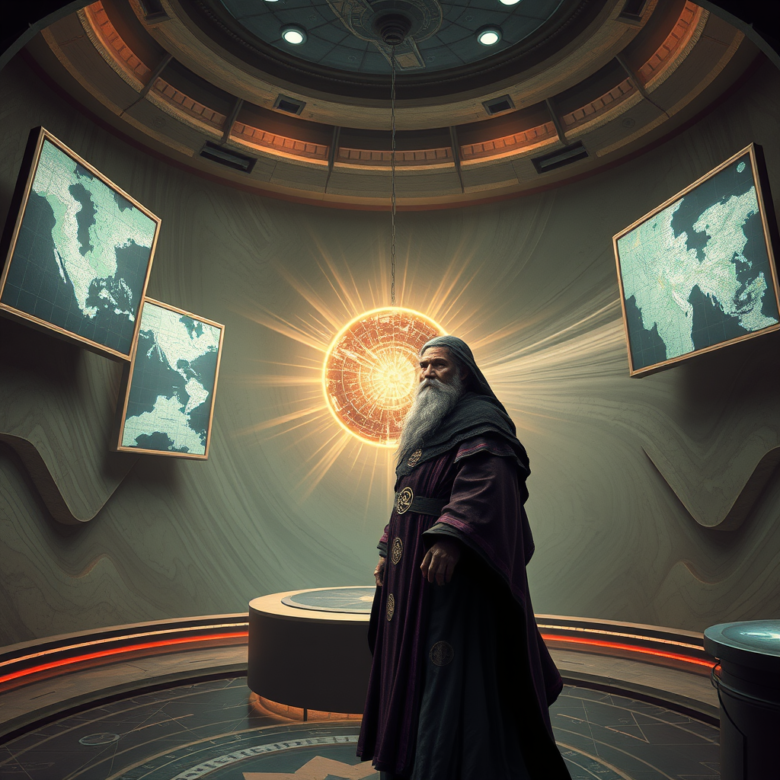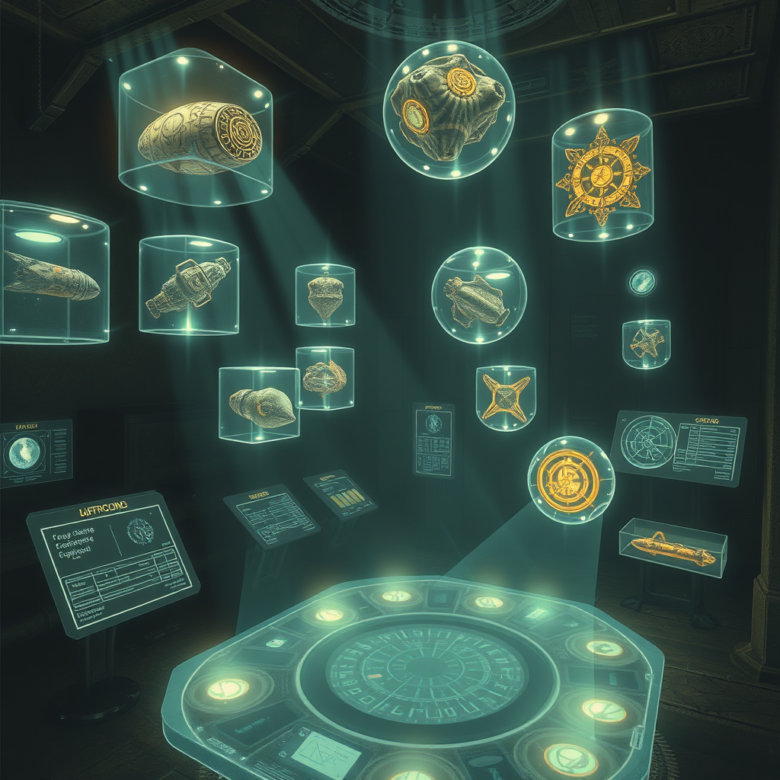The Citadel of Engineering
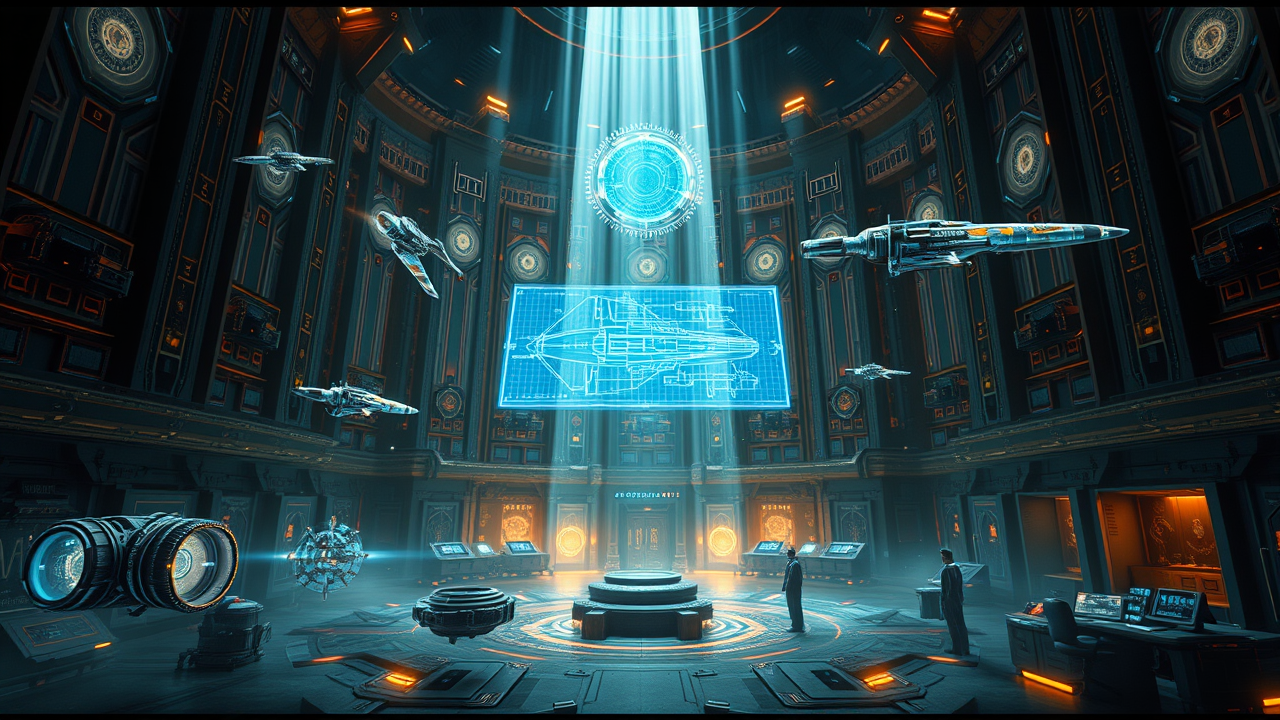
Introduction
I have walked through many halls, seen many marvels in my time—yet none quite like this. The Citadel of Engineering stands before me, not as a mere archive of machines and metal, but as a living, breathing entity of power, knowledge, and whispers. The hum of the floating devices resonates through the air, a symphony of ancient wisdom and forgotten dreams, like the heartbeat of a universe that holds its secrets close.
Here, science wears the face of magic, and magic dresses itself in the cool precision of mathematics. The Infinity Collider—towering and magnificent—seems almost to shimmer at the edge of reason, a construct that has been blamed for the unraveling of worlds, and yet, it might just be the salvation we seek. Who can say for certain? Not I, nor any other who treads these halls.
Before me flicker the blueprints of the GCS Horizons, a ghost of a ship lost to the stars, her stories written not in ink, but in the silent screams of those she carried to their end. And yet, hope clings to her like the remnants of a dying star’s light. She is remembered here, her secrets waiting to be told.
Then, there is the Neon Nights—a vessel smaller, sleeker, more reckless than her elder sibling. She dances on the edge of danger, carrying souls who refuse to be bound by fate. They say she was born in a storm of stars, forged to outrun the very limits of the cosmos. If you listen closely, you can almost hear her engines whispering of adventures yet to come.
And so, here I stand, among wonders and horrors alike, knowing full well that to gaze too long at the inventions in this place is to risk losing yourself. But such is the price of knowledge, is it not? Here, in the Citadel, the line between salvation and destruction is thinner than a strand of starlight—and I, like you, am left to wonder: which side will we fall on?
The Chronicler
The Keeper of Stories
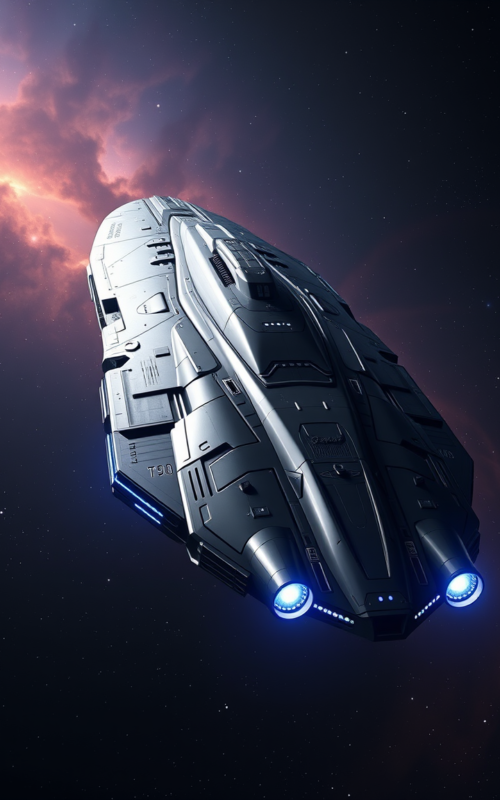
GCS Horizons
The GCS Horizons was no ordinary starship. She was a masterpiece of engineering and ambition, a vessel built to explore the farthest reaches of the cosmos and unlock the mysteries of the universe itself. Her hull gleamed like polished obsidian against the starlit void, a perfect marriage of form and function. But beyond her beauty lay power—an engine capable of bending space and time, her systems humming with the energy of a thousand suns. She was the pride of the Galactic Consortium, a symbol of humanity’s unrelenting desire to reach further, to know more, and to conquer the unknown.
The Horizons was outfitted with the most advanced technology the Consortium had ever produced. Her shields could withstand the gravitational forces of collapsing stars, and her weapons were designed to neutralize threats from beyond known space. But she wasn’t just a warship—she was a beacon of exploration. Laboratories filled her decks, each one devoted to studying the strange and the wonderful. From alien biology to quantum physics, the crew aboard her sought answers to questions no one had dared ask. And at the heart of it all was The Signal, the enigma that would define her fate.
Her crew was a reflection of her greatness, a collection of the finest minds and most courageous souls from across the Consortium. Scientists, explorers, engineers, and dreamers—all brought together with one purpose: to unravel the secrets of the cosmos. The Voyager led them, driven by an obsession with The Signal that even he couldn’t fully comprehend. His second-in-command, Kara Soren, was the guiding light in the darkness, a pilot who navigated the ship through dangers seen and unseen. Together, they believed they could unlock the mysteries of the universe. Instead, they encountered the darkness that lurked beyond the stars.
The Horizons’ end came not in glory but in tragedy. The ship, so full of promise, was lost to the very mystery she sought to uncover. No one knows exactly what happened during that fateful mission, but whispers of betrayal and madness haunt the Consortium to this day. Some say she vanished into a rift in space, torn apart by forces beyond human comprehension. Others believe she was sabotaged from within, her secrets too dangerous to be allowed into the light. But the truth, as with all great mysteries, remains hidden—locked within the void where the Horizons and her crew now rest.
The Infinity Collider
The Infinity Collider stands as one of the most daring feats of engineering ever attempted—a structure so vast and complex that even the minds who conceived it could not fully understand the forces they sought to control. A network of spiraling conduits and glowing energy cores, the Collider’s purpose was to probe the fabric of the universe itself, to peel back the layers of reality and glimpse the truth behind existence. What began as a scientific endeavor to unlock the mysteries of cosmic energy soon became a source of terror, for the Collider’s creations were as dangerous as they were magnificent.
Built on the precipice of known space, where the boundaries of reality already stretched thin, the Infinity Collider was designed to manipulate the very particles that bind the cosmos together. It could amplify energy on a scale never before imagined, harnessing forces from the birth of stars to the collapse of black holes. Yet, as its capabilities grew, so too did the dangers. The Collider began to produce anomalies—rips in space-time, distortions that defied the laws of physics. Some believed these tears were windows into other realities, others warned they were doors best left shut.
And then, there was The Signal. It was the Collider’s greatest discovery—and its most profound curse. Somewhere within the infinite expanse, a pulse was detected, a sound beyond human comprehension, a rhythm that seemed to echo through the very bones of existence. The scientists who first heard it were driven to madness, obsessed with its origin. Theories abounded—was it a message from an ancient race, a remnant of a long-dead civilization, or perhaps something older, more malevolent? As the Collider delved deeper into the mysteries of The Signal, it became clear that the universe was unraveling around them.
In the end, the Infinity Collider became both a beacon of hope and a harbinger of doom. Some believe it holds the key to stopping the Unraveling, that within its complex web of energy lies the answer to restoring balance to the cosmos. Others fear it has already doomed us all, that the very act of using the Collider has set in motion a chain of events that cannot be undone. But one thing is certain: the Infinity Collider is a gateway, and what lies on the other side is beyond our ability to comprehend.
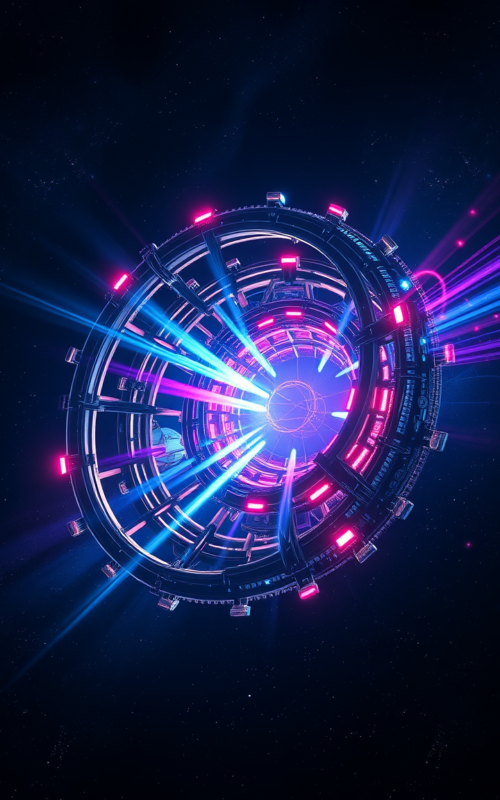
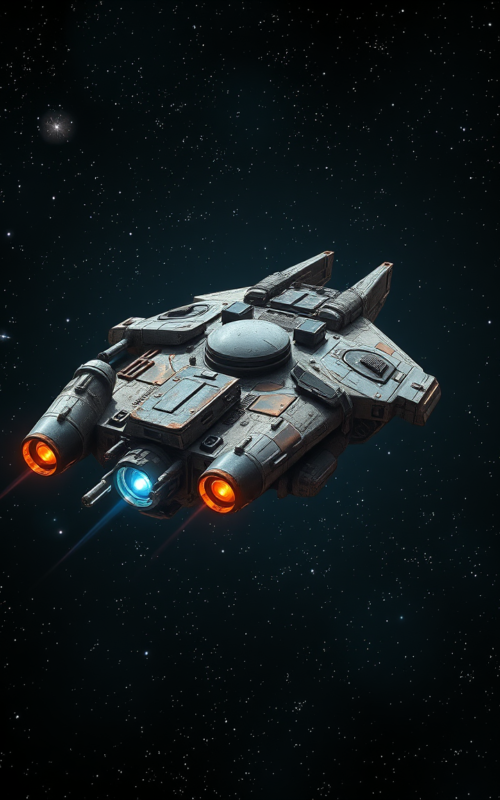
Neon Nights
The Neon Nights is a ship that wears its scars with pride. Small, fast, and unreliable, she is not the grand vessel of legends like the GCS Horizons. No, the Neon Nights is something altogether different—part relic, part miracle. Her exterior is a patchwork of mismatched plates, scorched by blaster fire and cosmic debris, barely holding together as she hurtles through the stars. To those unfamiliar with her, she looks like a ship one step away from falling apart. To those who know her, she’s home.
Beneath her battered hull lies a history as rich as any of the Consortium’s great starships. The Neon Nights wasn’t built for glory or exploration; she was built to survive. She’s seen more battles than most warships and outrun more than her share of pursuers. Her systems, though outdated, are masterfully modified by hands that knew how to push the limits of what’s possible. Kara Soren, who once piloted the GCS Horizons, now captains this rogue vessel, using every trick and technique she learned in her years of service. Together with the Voyager, they have made her more than a ship—she’s become their lifeline, their last hope against the Syndicate’s relentless hunt.
But no amount of modifications can hide the truth—Neon Nights is a ship held together by willpower and luck. Her engines sputter, her controls flicker, and more often than not, it takes a few choice kicks to get her flying. The crew constantly wrestles with failing systems, making emergency repairs mid-flight as they navigate dangerous sectors. She’s fast, but only just fast enough. And though she’s been through countless scrapes and near-deaths, there’s always the sense that one day, she’ll break for good. Every jump into hyperspace could be her last.
Yet, for all her faults, the Neon Nights has one thing no other ship in the galaxy does—heart. She may not be beautiful, and she may not be reliable, but she’s saved more lives than her dilapidated frame would suggest. For the Voyager and Kara, she’s a symbol of defiance, of survival in a universe that wants them dead. She carries with her the ghosts of a past they can never outrun, but she also offers the promise of a future, however uncertain. And so, despite the odds, she continues to fly, her engines coughing into the void, chasing the distant light of stars unseen.

